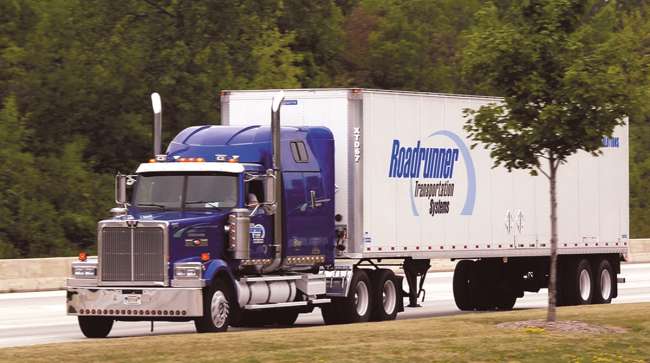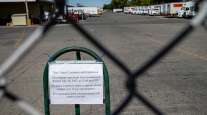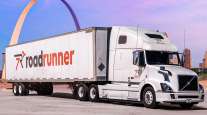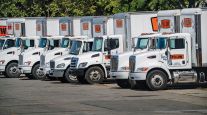Roadrunner Releases Financials Through 2016

One year after withdrawing its financial statements dating to 2011, Roadrunner Transportation Systems Inc. on Jan. 31 took a major step forward by releasing amended results through 2016.
Executives promised to issue the remaining statements within the next two months, essentially ensuring the company will not be delisted from the New York Stock Exchange.
RELATED: Roadrunner granted extension to remain on New York Stock Exchange
Between 2011 and 2016, Roadrunner overstated its earnings by $66.5 million. An investigation found that the previous management team made key accounting errors and uncovered weaknesses in the internal controls on financial reporting.
Roadrunner disclosed on Jan. 31 that the Department of Justice and Securities and Exchange Commission are investigating the matter.

Stoelting
In a conference call with investment analysts, Roadrunner CEO Curtis Stoelting outlined a pattern of poor business practices under former CEO Mark DiBlasi and Chief Financial Officer Peter Armbruster that was exposed after the company began a buying frenzy in 2011. Roadrunner bought 25 privately owned companies over 3½ years.
“The prior management, finance and IT teams had no comprehensive integration plans, no consistent internal control and accounting procedures and no standardized or common finance or IT systems,” he said. “The large number of acquisitions increased the complexity of the company, and they also increased the company’s debt levels and leverage ratios. Ultimately, the large number of acquisitions exposed weaknesses in the company’s corporate finance team, systems and internal control environment.”
Over the past 12 months, the board of directors replaced DiBlasi with Stoelting and Armbruster with Terrence Rogers. It also has hired a new chairman of the board, chief operating officer, chief information officer, chief compliance officer and leaders in five operating companies.
“Each [acquired] company brought with it its own accounting system and policies and procedures. No process was put into place to integrate these different accounting processes or to incorporate consistent practices across the company,” Rogers said.
As a result, Roadrunner overstated earnings by $15.2 million from 2011 through 2013, $19.3 million in 2014, $22.4 million in 2015 and $9.6 million in the first three quarters of 2016, according to the documents.
Roadrunner Transportation Systems Restatement Presentation by Transport Topics on Scribd
In the newly amended statement, Roadrunner said revenue in 2016 climbed 2.1% to more than $2 billion, but earnings before interest, taxes, depreciation and amortization plunged 92% to $7.8 million. Roadrunner ended the year with a $35.6 million net loss compared with $25.6 million in net income for 2015.
“Less-than-truckload revenue [in 2016] declined on weak demand and falling fuel prices, which resulted in lower fuel surcharge revenue. Declines in global solutions were from weak demand and pricing, especially in international freight forwarding,” Rogers said.
While 2017 data will be released in March, the company categorized business as weak through September. Prices improved in the fourth quarter and remained higher in January, but Rogers warned that poor business practices and lax accounting continued to hurt Roadrunner’s performance in 2017.
“It takes some time to correct and remediate deficiencies, as well as time to demonstrate and measure that the controls are working and sustainable,” Rogers said.
Chief Operating Officer Mike Gettle also said the less-than-truckload business — Roadrunner Freight and Expedited Freight Systems — lost more money in 2017 than in 2016.
“The challenges we have had over time were that we provided an inconsistent and, frankly, an inadequate level of service to our customers. We chose to optimize our cost over our service and that damaged the reliability and I think the trust in the Roadrunner brand,” he said. “The good news is with the investment in this business, we are starting to see encouraging signs in our service, freight profile and revenue, but it will require more work and time to return to profitability.”
Gettle expressed optimism that the LTL business can be an option for shippers frustrated with escalating prices at top-tier carriers, if they’re willing to accept longer delivery times.
In 2016, LTL generated about 24% of Roadrunner’s revenue, while the truckload and brokerage business accounted for 61% and Ascent Global Logistics contributed the remaining 16%.
Despite the troubles, Stoelting and Gettle said no big clients canceled accounts during the financial turmoil, and they thanked shippers for their patience.
General Motors was Roadrunner Transportation’s No. 1 customer in 2016 with $252.1 million in revenue. Smithfield Foods was No. 3 ($79.3 million), Ford Motor Co. was No. 4 ($73.7 million) and Honda Motor Company was No. 8 ($25.9 million).
Other customers included equipment manufacturer John Deere, biotechnology firm Genentech Inc. and third-party logistics companies Ryder Systems, Hub Group, C.H. Robinson Worldwide, Echo Global Logistics and Globaltranz Enterprises.
Roadrunner ranks No. 15 on the Transport Topics Top 100 list of the largest for-hire carriers in North America.




